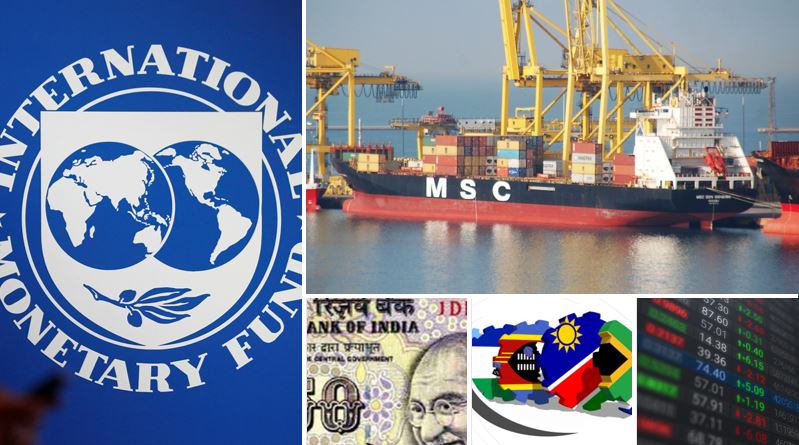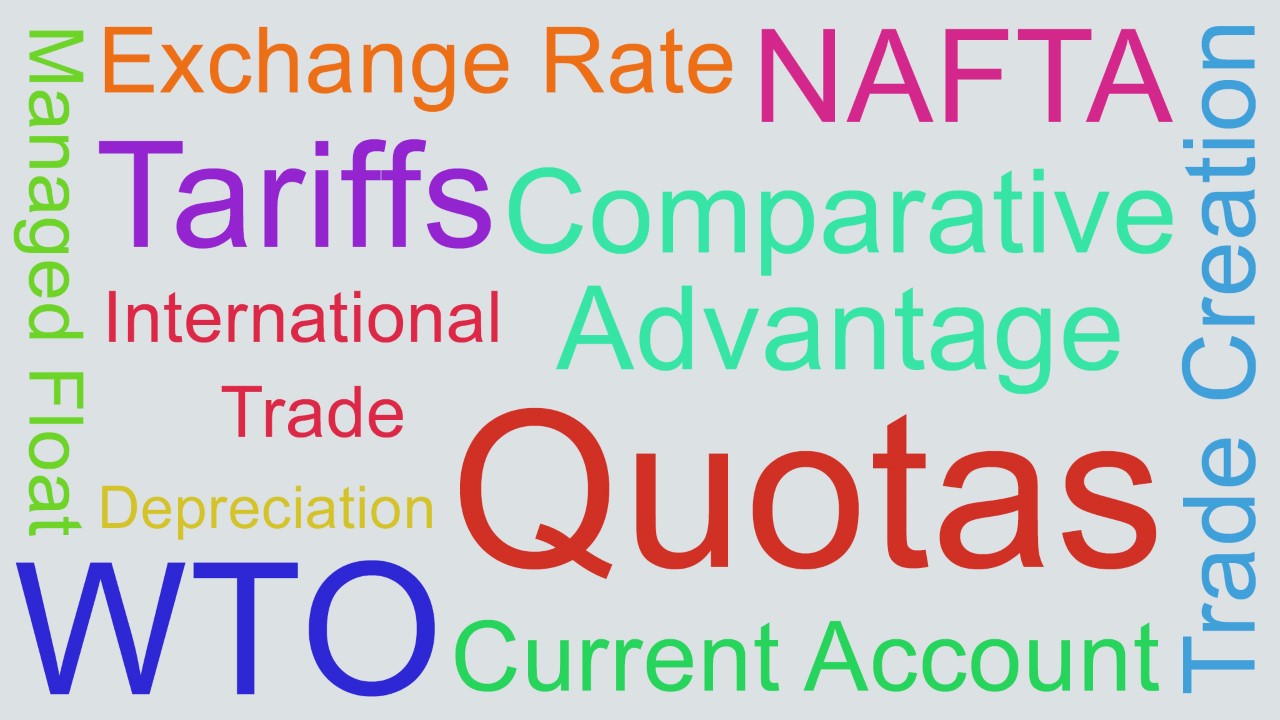Chapter 4: The Global Economy
This chapter includes the units covered in the global economy section of the new syllabus which replaces the international economics and economic development sections of the old syllabus.
Links to individual units in chapter 4
This chapter includes the units covered in the global economy section of the new syllabus which replaces the international economics and economic development sections of the old syllabus.
The sections starts with unit 4.1 on the benefits of international trade and then moves onto units 4.2 and 4.3 which cover protectionism. Section 4.4 explores covers economic integration and looks in detail at the different types of trading blocs. The next section 4.5 covers exchange rates and the section 4.6 examines the balance of payments.
The pages have full student access to give maximum flexibility to the teacher and the student. This is a link page to sub-pages, containing each of the units for unit 4 of the new curriculum. The pages have full student access to give maximum flexibility to the teacher and the student.
Unit 4.1 Benefits of international trade
The consensus of most economists is that free international trade is beneficial to the different stakeholders in the economy. Evidence suggests households, firms and the governments have all gained from...
Unit 4.2/4.3 Trade protectionism
Types of trade protection; diagrams showing the effects of tariffs, quotas and subsidies on different stakeholders; arguments for trade protectionism. Whilst most economists see a very strong case for free...
Unit 4.4 Economic integration
Economic integration occurs when the economies of different countries move closer together in terms of their trading relationships and economic policy making. The formation of the European Union is an...
Unit 4.5 Exchange rates
An exchange rate is the price of one currency in terms of another set on the foreign exchange markets. Exchange rates are a very important aspect of international trade because international transactions...
Unit 4.6 Balance of payments
The balance of payments (BOP) is an account that records the inflow (credit items) and outflow (debit items) of funds to and from the domestic economy which results from a country’s financial transactions...
Unit 4.7 Sustainable development
Sustainable economic development was defined by the Bruntland Commission as “development that meets the needs of the present without compromising the ability of future generations to meet their own...
Unit 4.8 Measuring development
In Unit 4.7 we defined economic development as the sustained rise in the welfare of a country’s population overtime. We also broadened this definition to consider the nature of a rise in welfare in...
Unit 4.9 Barriers to economic development
Less Developed Countries (ELDCs) face a range of challenges that make it difficult for them to achieve sustainable economic...
Unit 4.10: Economic growth and economic development strategies
Governments in ELDCs have an important role to play in developing a strategy to support and facilitate economic growth and development in their country. The focus of government strategy often tends to...
 IB Docs (2) Team
IB Docs (2) Team
